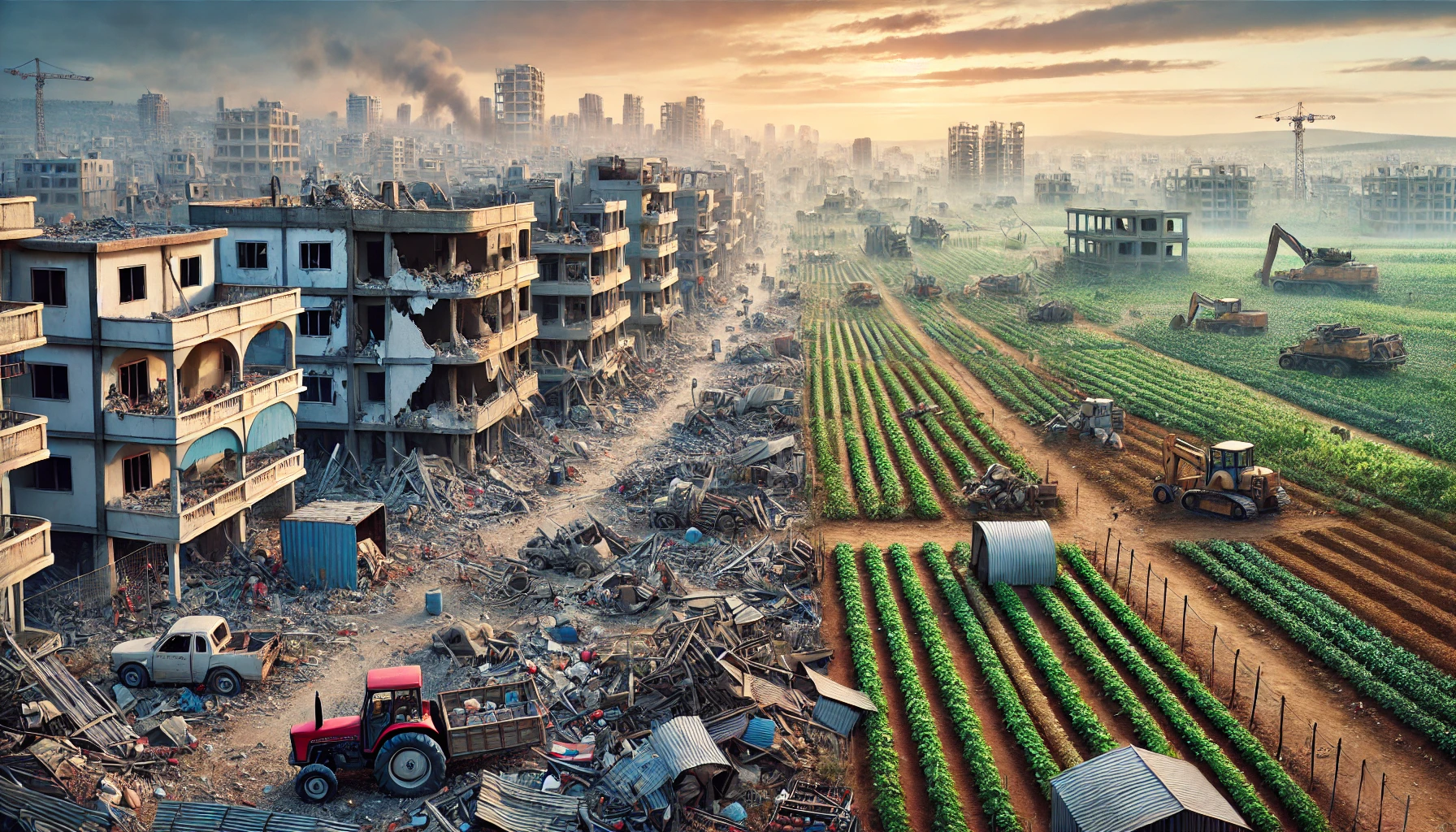Economic Collapse in Lebanon: Conflict Causes Massive Losses and Displacement Nationwide
The World Bank’s assessment reveals $3.4 billion in damages and $5.1 billion in economic losses from Lebanon’s ongoing conflict, devastating housing, agriculture, and key sectors. With 1.3 million displaced and GDP contracting by 6.6%, the crisis demands urgent recovery and international support.

The World Bank’s Interim Damage and Loss Assessment (DaLA), conducted with collaboration from the International Organization for Migration (IOM) and United Nations agencies, paints a grim picture of Lebanon’s economic and infrastructural devastation caused by conflict. The report, published in November 2024, estimates damages of 3.4 billion dollars and economic losses of 5.1 billion dollars over 12 months since the violence began in October 2023. The assessment spans critical sectors including housing, agriculture, commerce, education, health, environment, and tourism, highlighting the multi-faceted challenges Lebanon faces in the wake of prolonged conflict. These findings underscore the severe toll on a nation already burdened by years of economic crisis, banking sector instability, and systemic governance issues.
Housing Sector Suffers the Worst Blow
The housing sector has borne the brunt of the conflict, with damages totaling 2.8 billion dollars, or 82% of the overall destruction. Over 99,000 housing units have been partially or fully destroyed, leaving countless families displaced. This devastation compounds an existing housing crisis that emerged in 2019 due to inflation, currency devaluation, and skyrocketing construction costs. A significant proportion of the destruction is concentrated in the southern governorates, where entire neighborhoods have been obliterated. The economic losses in this sector, estimated at 389 million dollars, include foregone rental income, lost property tax revenues, and disrupted building maintenance services.
Agriculture and Commerce Hit Hard
Agriculture, a cornerstone of Lebanon’s economy and a critical source of livelihood has experienced 124 million dollars in damages and faces 1.1 billion dollars in losses. The conflict has decimated crops, livestock, and agricultural infrastructure, particularly in the southern regions where large swathes of farmland have been abandoned or destroyed. Banana plantations, olive groves, and mixed orchards have been severely impacted, and displaced farmers face uncertain futures. The commerce sector, accounting for a vital share of GDP, has suffered 178 million dollars in damages and 1.7 billion dollars in losses. Many businesses in conflict zones, especially in Tyre, Nabatiyeh, and Beirut, have been shuttered, their operations crippled by supply chain disruptions and the displacement of employees. Retail establishments, small industries, and trade services have been particularly vulnerable, with long-term recovery heavily reliant on stabilization and rebuilding efforts.
Education and Health Systems on the Brink
The conflict has exacerbated Lebanon’s long-standing education crisis, resulting in 215 million dollars in losses. Approximately 450,000 students have been displaced, and many schools are now functioning as shelters, delaying the academic year and disrupting learning for thousands of children. This setback will have long-term repercussions for human capital development and future economic productivity. On the health front, 74 million dollars in damages and 338 million dollars in losses have been reported. Nearly 66% of hospitals and 36% of primary healthcare centers in conflict-affected areas are non-operational. Medical facilities in the southern governorates and the suburbs of Beirut have been particularly hard-hit, leaving residents with limited access to essential healthcare. The situation is compounded by overcrowded shelters, which increase public health risks, and a shortage of healthcare workers, further straining an already fragile system.
Environmental and Tourism Sectors Face Lasting Damage
Environmental degradation has emerged as a critical concern, with 221 million dollars in damages and 214 million dollars in losses. Forests, grasslands, riverine ecosystems, and coastal areas have been severely affected, disrupting ecosystem services such as water purification, soil fertility, and waste management. Solid waste infrastructure, already inefficient before the conflict, has sustained further damage, complicating recovery efforts. The tourism sector, once a significant contributor to GDP, has been brought to its knees, with 18 million dollars in damages and 1.1 billion dollars in losses. A 75% drop in tourist arrivals during peak seasons has devastated businesses reliant on tourism, such as hotels, restaurants, and transportation services. The ripple effects have been felt nationwide, with economic losses extending far beyond the conflict zones.
Widespread Displacement and Economic Impact
The conflict has displaced over 1.3 million people internally, with an additional 440,000 seeking refuge in Syria. This massive displacement has overwhelmed host communities, straining infrastructure and social services, including water, electricity, and waste management. The economic repercussions are profound, with Lebanon’s GDP growth for 2024 projected to decline by at least 6.6%. Private consumption, which accounted for 134% of GDP in 2023, has plummeted, and the collapse of tourism has further deepened the economic crisis. Since 2019, Lebanon’s economy has contracted by 34%, erasing 15 years of progress. The ongoing conflict compounds this decline, leaving the nation’s recovery prospects bleak without sustained international support and strategic planning.
While the report provides critical insights into the scope of damages and losses, it emphasizes its limitations. The assessment relies heavily on remote data collection due to security challenges, and the full extent of damages remains unaccounted for as the conflict continues to escalate. Furthermore, it does not include forward-looking recovery and reconstruction needs, which will require a more comprehensive analysis once the situation stabilizes. As Lebanon grapples with this crisis, the findings underscore the urgent need for coordinated efforts to address the immediate humanitarian needs while laying the groundwork for long-term recovery and resilience.
- FIRST PUBLISHED IN:
- Devdiscourse










